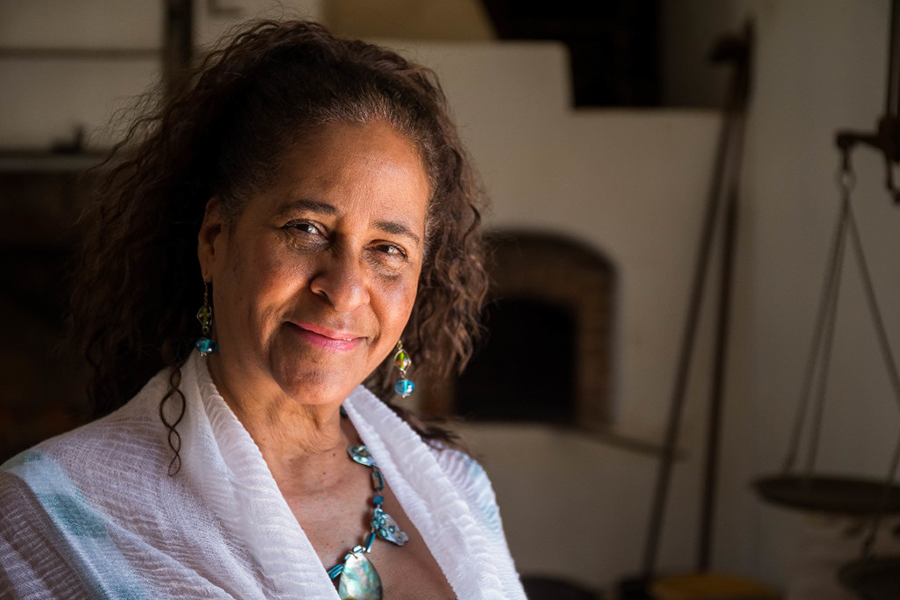George Washington’s African-American descendants recognized after 200 years
Loading...
Rumors that have surrounded George Washington’s family tree for more than 200 years have been confirmed: Since some of the nation’s earliest days, the Founding Father and first US president’s family tree has had biracial members.
The National Park Service and the nonprofit that runs Washington's Mount Vernon estate have added exhibits to the estate that recognize descendants of Washington’s step-grandson who were born outside of the official family lineage. While no DNA evidence has been used to back up the claims, historians say the rumors have long lived in the shadows of the classic perceptions of the first family, and they now have other evidence that’s sufficient to make the call.
The move to include these offspring in the historical narrative of the nation’s first family marks a push to uncover and celebrate African-American heritage, exploring an often overlooked aspect of early American history.
"There is no more pushing this history to the side," Matthew Penrod, a National Park Service ranger and programs manager at Arlington House, the former home of Robert E. Lee, told the Associated Press.
While George and Martha Washington had no biological children of their own, the first president did adopt Martha’s grandchildren, George Washington “Wash” Parke Custis, and Eleanor “Nellie” Parke Custis Lewis. Both were raised on Washington’s Mount Vernon Estate.
Parke Custis married Mary Fitzhugh in 1804, five years after Washington’s death. Together, they had one daughter, Mary Anna Randolph Custis, who would survive to adulthood and marry General Lee, her third cousin.
What historians are now recognizing, however, is that Parke Custis also fathered children with Arianna Carter and Caroline Branham, two of Washington’s slaves.
Scientific proof would have to come from a DNA test comparing Carter and Branham’s living descendants with those of Lee, the only official bloodline of Parke Custis. Whether or not Lee’s relatives would consent to such testing isn’t yet clear.
While the historic revelation sheds light on a once-concealed portion of African-American history, it’s not the first insight into life as a slave at Mount Vernon. Just as American perception of African-American history has shifted, Washington’s own feelings on slavery altered during his lifetime, leading him with conflicting feelings about the institution.
At age 11, Washington inherited 10 slaves and 280 acres of land. Over the next few decades, he would purchase more than 100 additional slaves.
As a strict plantation manager driven by efficiency, Washington was sometimes deemed a harsh slave owner in the beginning of his career, with his neighbor Richard Parkinson noting, "it was the sense of all his [Washington's] neighbors that he treated [his slaves] with more severity than any other man.”
But others later wrote that Washington treated his slaves with more humanity than other owners did, and later, he began to sympathize with those living on his plantation.
“The unfortunate condition of the persons, whose labour in part I employed, has been the only unavoidable subject of regret,” he wrote later in life. “To make the Adults among them as easy & as comfortable in their circumstances as their actual state of ignorance & improvidence would admit; & to lay a foundation to prepare the rising generation for a destiny different from that in which they were born; afforded some satisfaction to my mind, & could not I hoped be displeasing to the justice of the Creator."
During the Revolutionary War, Washington began to internalize the ideals of liberty and equality he fought for as a general, and wanted to extend those in some manner to the slaves he owned. Over time, those feelings grew to near resentment of his own role as a slave owner.
In the 1790s, after vowing not to purchase or sell any more slaves, Washington began an experiment: He would seek English or Scottish farmers to rent out farm space on his plantation, hoping that tenants might hire slaves as laborers rather than bringing their own workers from Europe.
While his plan was unsuccessful, Washington did make provisions in his will to set more than 100 slaves free following Martha’s death. Nearly 200 slaves remained on Mount Vernon under the ownership of Parke Custis and his sister.
By recognizing more of Washington's ancestors and the their history, historians hope to dismantle antiquated views on the family and race-relations at the plantation, creating a more accurate and inclusive exhibit.
"My aunt told me that if the truth of our family was known, it would topple the first families of Virginia," ZSun-nee Miller-Matema, a descendant of Parke Custis and Branham, told the Associated Press. "We're all so much a part of each other. It just makes no sense any more to be a house divided."
Information from the Associated Press was used in this report








